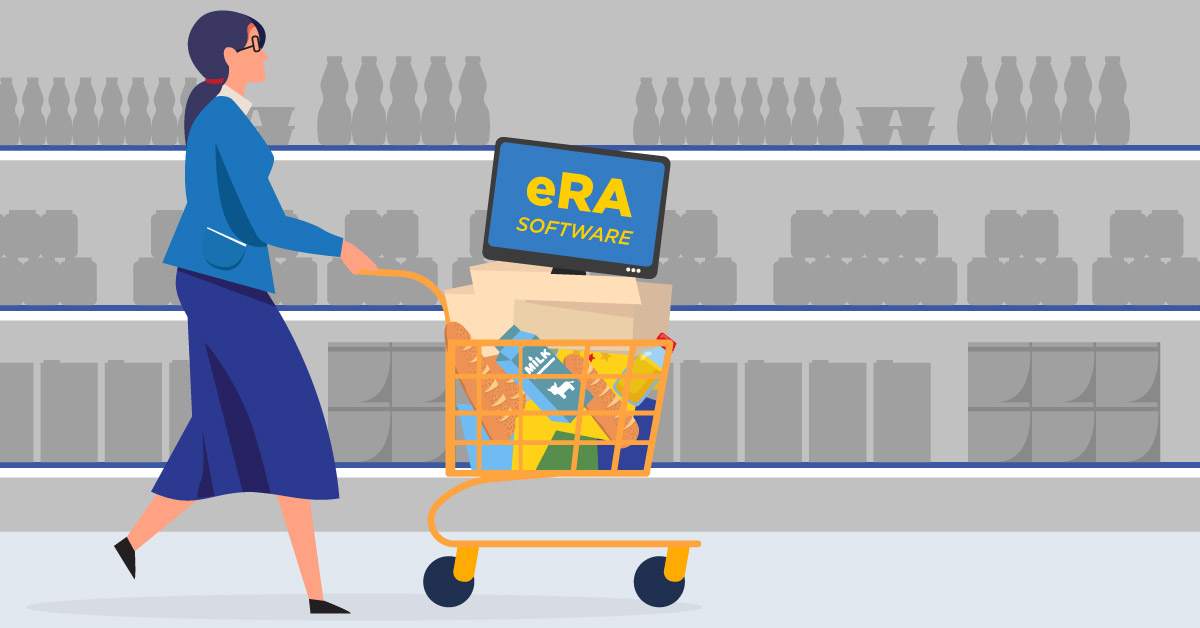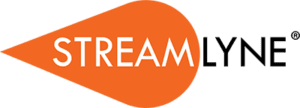
These days, research administration is fully reliant on eRA software. But let’s rewind a bit with some brief history. To set the foundation, basic software tools for research admins first became available in the 1980’s. These tools included applications for managing budgets, tracking projects, and reporting on key metrics.
Moving to software and away from ledgers and old methods represented a big advancement. However, even with improvements over time, these simplified programs remained limited in their abilities. This is where eRA software comes into play.
What does eRA software do?
Electronic Research Administration (eRA) software helps to standardize the management of research projects, teams, and departments. As soon as universities, research institutions and other research organizations implement it, their researchers and research support personnel use it on a daily basis. This is because eRA software can assist in the submission, tracking, and review of research projects, even on a mass scale. It also minimizes errors, brings teams in closer alignment, and speeds up time-intensive requirements. All of these capabilities and more assist in running research administration smoothly and efficiently.
How is eRA software acquired?
Modern eRA software as we know it has really come into its own over the past two decades; it is now indispensable. The acquisition of eRA software reflects the institution’s significant commitment to improve its overall research admin operations. Because enterprise software handles such complex requirements, it is not an off-the-shelf product. Instead, eRA software is frequently, but not always, acquired via an RFP and an extensive vetting process.
During this process, vendors each showcase the merits of their own systems through demos and evaluations. Occasionally, vendors will implement a sample data set and make a use case for the university or organization. This allows the purchasing institution to make an informed decision, ultimately awarding the contract to the vendor of choice. In some cases, the purchaser can sole-source the acquisition which can greatly speed up the timeline.
Once the parties sign a purchase agreement, the eRA software adoption typically involves implementation services, trainings, ongoing support, and community resources. The extent of these benefits, along with the frequency of software upgrades and enhancements, can vary from vendor to vendor. Ideally, the purchasing institution and vendor work in collaboration, establishing a trusted partnership that unfolds over many years.
What to look for in an eRA system
Needs for an eRA software vary from one institution to the next. Even with standard practices across the field of research administration, each program may have its own nuances, organizational structure, and unique priorities. With this in mind, when shopping for an eRA system, here are some key features and benefits to consider:
- Functionality that provides support for all institutional needs, including opportunity searching, proposal development, budgeting, negotiation tools, award management, conflict of interest management and the management of other compliance functions.
- Integration Capabilities: The software should integrate seamlessly with other institutional software, like HR, financial, and student systems.
- Customizable Workflows: A well-developed eRA will allow for customization, with the ability to address specific workflows and procedures.
- Reporting and Analytics: Advanced reporting tools to track and measure the performance, funding, and outcomes of research projects are essential.
- Secure Data Storage: With sensitive data in play, security features, including encryption and regular backups, are crucial.
- Collaboration Tools: These facilitate team communication and coordination, ensuring that all team members are on the same page.
- Compliance Management: To avoid legal complications, the system should enable institutions to adhere to regional, national, and international regulations.
- Cloud-based access: Given the rise of remote work, a system accessible across workspaces and devices ensures uninterrupted productivity.
- User-Friendly Interface: The system should be intuitive, reducing the learning curve for researchers, administrators, and other stakeholders.
- Training and Support: As mentioned, vendor-provided training resources and customer support can significantly enhance the user experience.
Who are the essential eRA software vendors to know?
If you are undergoing a search for an eRA software for your university or research program, you’ll likely become familiarized with these names: Streamlyne, Cayuse, Kuali, InfoEd, and Huron. Each of these companies have their own eRA software product and approach, with a base of users. Let’s do a synopsis of each one:
Streamlyne
Known for our all-encompassing research administration suite, Streamlyne offers solutions for large university research programs, standalone institutions, and everything in-between. Our user-friendly interface and robust reporting capabilities make our software a favorite among a growing number of institutions.
Here are some facts about Streamlyne to help inform your eRA software search:
- Tailored Solutions: Streamlyne takes pride in catering to institutions of different sizes. Whether it’s an R1-designated research university or a smaller college, the platform offers solutions that can be molded according to the specific needs of the institution.
- User-Friendly Interface: One of the recurrent praises for Streamlyne is our user-centric design. An intuitive user interface can significantly reduce the learning curve, making it easier for both seasoned administrators and researchers to navigate and utilize the platform effectively.
- Robust Reporting: Data-driven decision-making is crucial in research administration. Streamlyne offers advanced reporting tools that not only allow administrators to keep track of ongoing research but also provide insights that can help in making strategic decisions.
- Integrated Approach: The ability to integrate seamlessly with other institutional software systems – be it financial systems, HR tools, or other enterprise solutions – can save institutions time and reduce errors. Our integrative capabilities mean that institutions don’t have to jump between platforms to get a holistic view.
- Cost-Effectiveness: While the cost can vary based on the specific needs and scale of the institution, we position ourselves as a cost-effective solution, especially when considering the wide range of features for the price point.
- Continuous Support and Training: Transitioning to a new eRA system can be a daunting task. Our commitment to offering ongoing training and support ensures that institutions can make the most of the platform without feeling overwhelmed.
- Scalability: As institutions grow and their research endeavors expand, they need a system that can grow with them. Our scalable solution ensures that, as the research portfolio of an institution expands, the system can handle the increased demands without a hitch.
Website: https://streamlyne.com
Cayuse
With a platform centered on solutions first developed in 1994, Cayuse offers a suite of software aimed at research administration programs. Over the years, they have expanded their product offerings primarily through acquisition of other programs, while maintaining a focus on simplicity. They are headquartered in Portland, Oregon.
Website: https://cayuse.com
Kuali
Originally founded as a not-for-profit consortium, Kuali is a private company that creates tools to directly serve the needs of educational institutions. Kuali Research, one of their many modules, has been developed with continuous input from the institutions it serves in order to align its functions with current requirements. Their headquarters are in Lehi, Utah.
Website: https://www.kuali.co
InfoEd Global
This company started life as an opportunity search engine, which is still a primary product offering. In addition to this, they have their own version of modules catering to various aspects of research administration, such as compliance and ethics. Like some others in this category, InfoEd has diversified to provide software to corporations in addition to research administrators. They have headquarters in Albany, New York.
Website: https://www.infoedglobal.com
Huron
Huron is widely known as a consultancy firm. Its foray into the research administration space revolves around its consulting practice, and they offer software in addition. More than once, they were recognized by Consulting Magazine for their consulting expertise. With interests stretching outside of research administration, the company’s numerous other focus areas include healthcare, life sciences and commercial clients. They are based in Chicago, Illinois.
Website: https://www.huronconsultinggroup.com
Newer and smaller vendors
It’s important to note that the list above is not exhaustive. When you’re searching the web for eRA software, you may see other names in addition to the ones referenced here. For example, there may be vendors who are new to eRA software. Or vendors that address only one small function within research administration, but consider themselves to be in the same software category. Just because a vendor advertises eRA software, it does not automatically mean that it’s of the same quality.
We suggest exercising caution, particularly if:
- The vendor does not have a proven track record
- The price point is uncharacteristically low
- The vendor is giving you the “hard sell”
- Your questions are not being answered with transparency
- Other reputable vendors have never heard of them
Of course, we encourage you to do your own research, and make your own determinations. But all things considered, a less reputable vendor may not be what you’re looking for, regardless of the initial appeal.
Why eRA vendor selection is so important
Acquiring eRA software is a big decision, and it represents a significant commitment of resources on behalf of the institution. For example, the selection process involves appointing a cross-functional committee, one that will devote time and energy to the endeavor. As this process can span weeks or months, it relies on establishing trust between the institution and the participating vendors.
During this time, the institution must establish that the vendor(s) are properly representing their capabilities, and are ethical and dependable. Ideally, the two sides are able to form an initial partnership, because the experience throughout this phase matters just as much as it does later. This early collaboration throughout the vetting process can be an indication of what’s to come, and how well the two sides will work together under real scenarios.
What happens after a vendor is determined
Even after you choose a vendor, the award phase can be highly detailed and specific, and it can take time to iron out. There are schedules to consider, as well as data mapping, process implications, and staff trainings, and other considerations. This is why the eRA vendor has to be more than just a good software developer. Beyond technical skill, the eRA vendor should be receptive, responsive, and engaged at every step, as an ally and extension of the institution’s team.
Here are some questions to ask yourself in making the final selection:
- Do I like this vendor’s approach and their way of doing business?
- Do I feel comfortable having open and transparent conversations?
- Do I feel guided and advised along the way?
- Can the system be tailored to our institutional needs (ex: modules, integrations, workflows)?
- Are my questions being answered?
- Is the vendor equally committed to a long and fruitful partnership?
- Will I be joining a thriving community of like-minded user institutions?
Ultimately, the answer to all of these questions and more should be a resounding “yes.” eRA software is not a casual impulse purchase; it is one of the most important decisions a research administrator can make. When implemented properly with the right partner, the results can be powerful (greater efficiencies, reduced administrative burden, productivity improvements). It all comes down to which vendor will be the best suited, care the most, and uphold every promise made.
Conclusion
As stated, the five companies previously referenced are the ones you’ll likely encounter when searching for an eRA system: Streamlyne, Cayuse, Kuali, InfoEd, and Huron. These companies, each with their unique histories and focuses, serve as the backbone of the eRA field, helping institutions around the world manage and optimize their research endeavors.
In the competitive landscape of eRA systems, Streamlyne has managed to carve a niche for itself by emphasizing exceptional value, integrative capabilities, and comprehensive support. However, the best eRA system for any institution will often depend on its specific needs, budget, and institutional culture. It’s always advisable for decision-makers to conduct thorough research and even trial runs before settling on a specific platform. Whether it’s integration capabilities, user-friendly design, or compliance management, having the right features can make all the difference.
Fortunately, with companies like Streamlyne in the market, as well as Cayuse, Kuali, InfoEd, and Huron, institutions have a diverse range from which to choose. This ensures that they can find a system perfectly tailored to their needs.
Find out if Streamlyne is right for your institution
For questions about our popular Streamlyne Research eRA software, and to set up a custom demo, please contact us. A friendly and knowledgeable product expert will be in contact, typically within one business day.
Streamlyne is well known as a leading company in the eRA software field. As such, universities and research programs regularly request that we participate in RFPs and vendor evaluations. In fact, many times, the final decision comes down to our company and one or more of the vendors mentioned above. Based on the needs and preferences of the institution, we are able to make a confident determination about how to proceed.
Do you have an active or upcoming RFP? Do you make key software decisions for your research program? We will be happy to review your requirements, make determinations, and provide advice for a successful eRA software procurement, adoption, and implementation.

